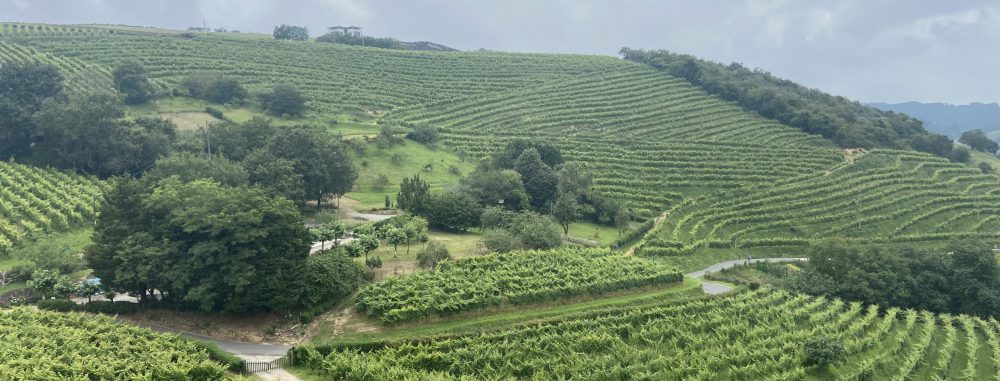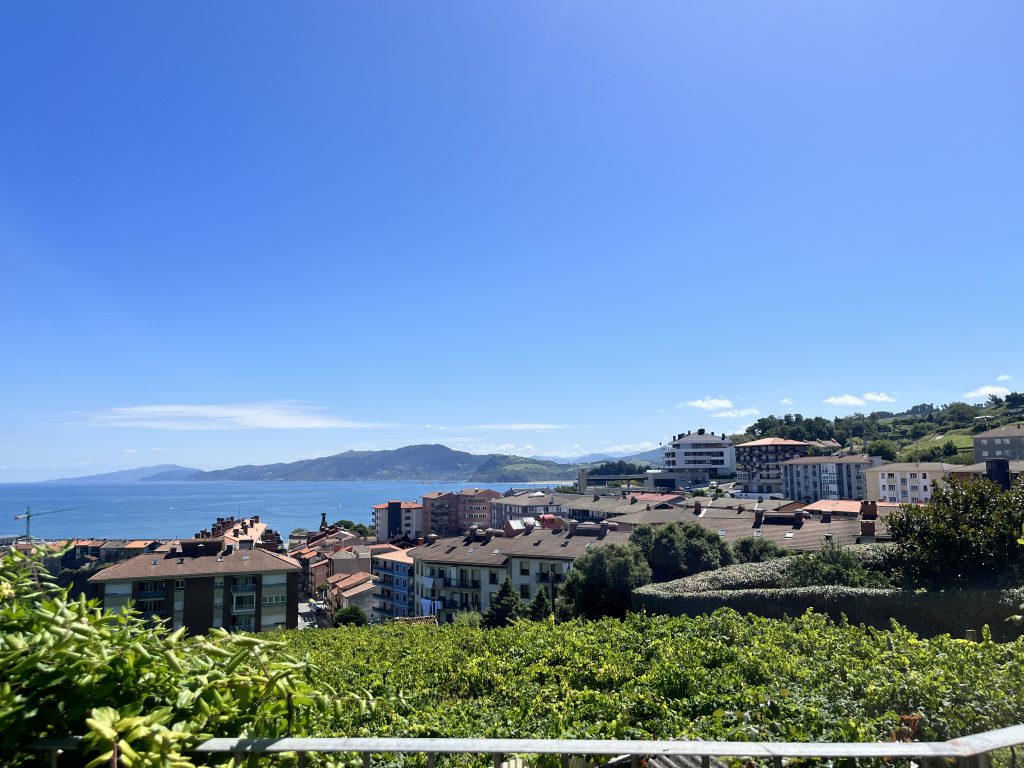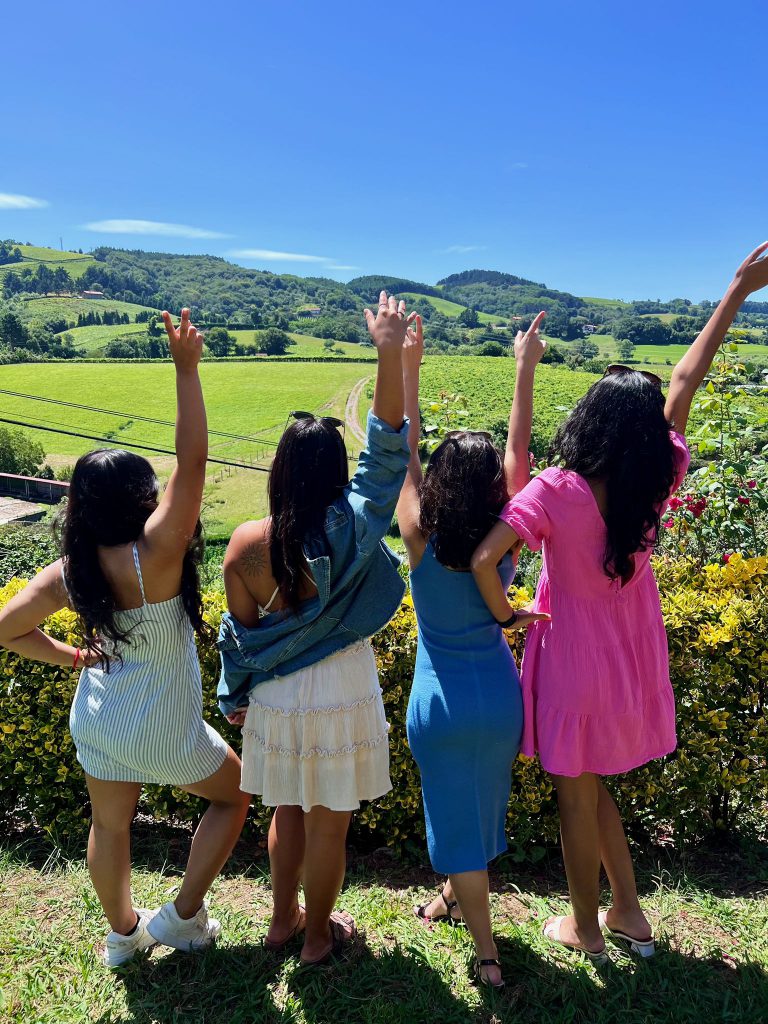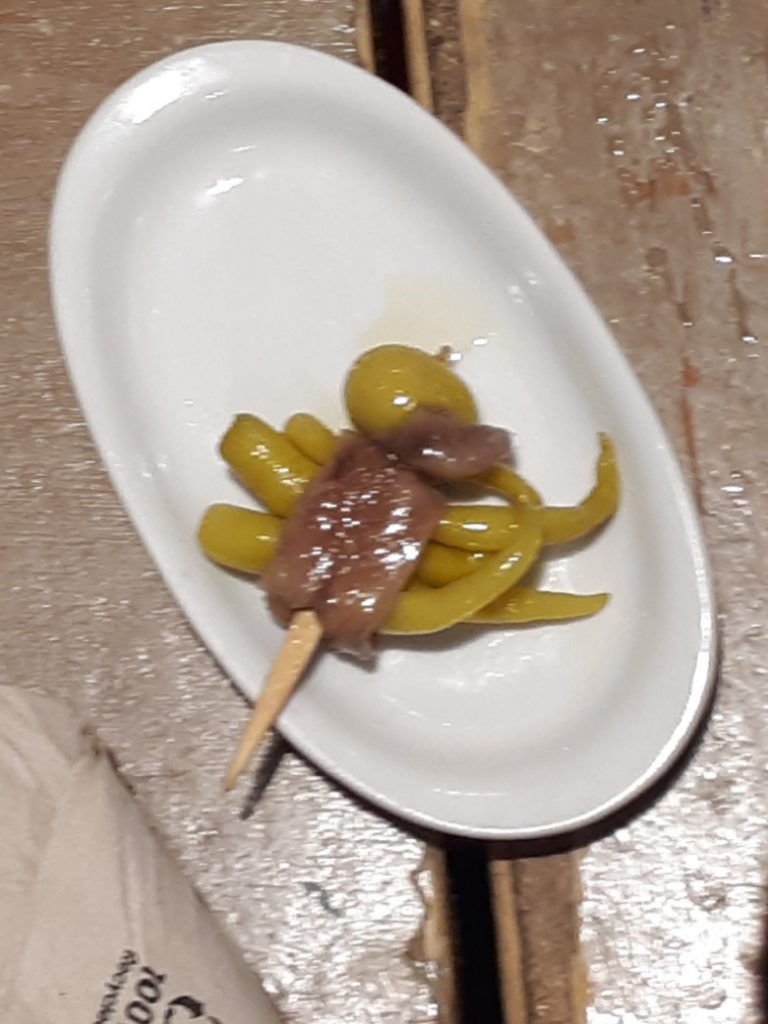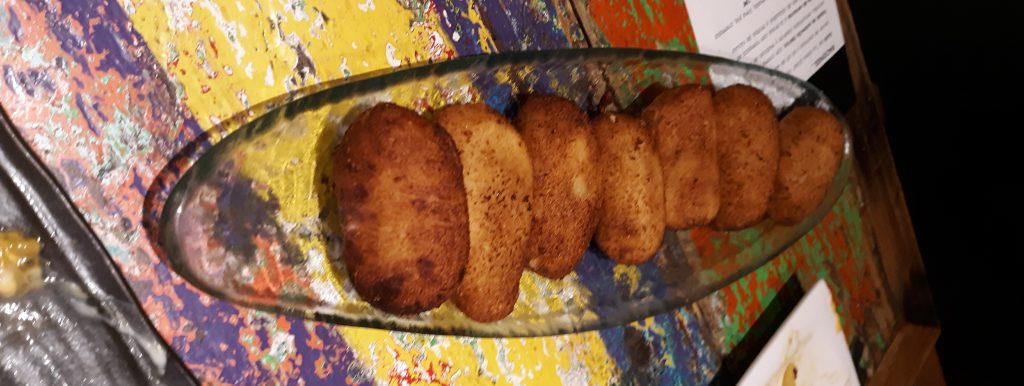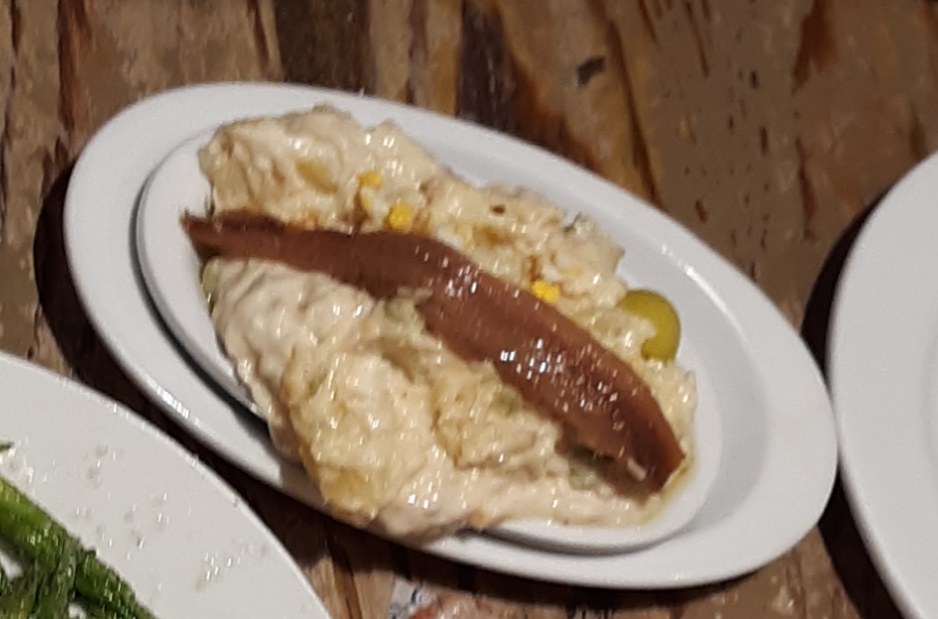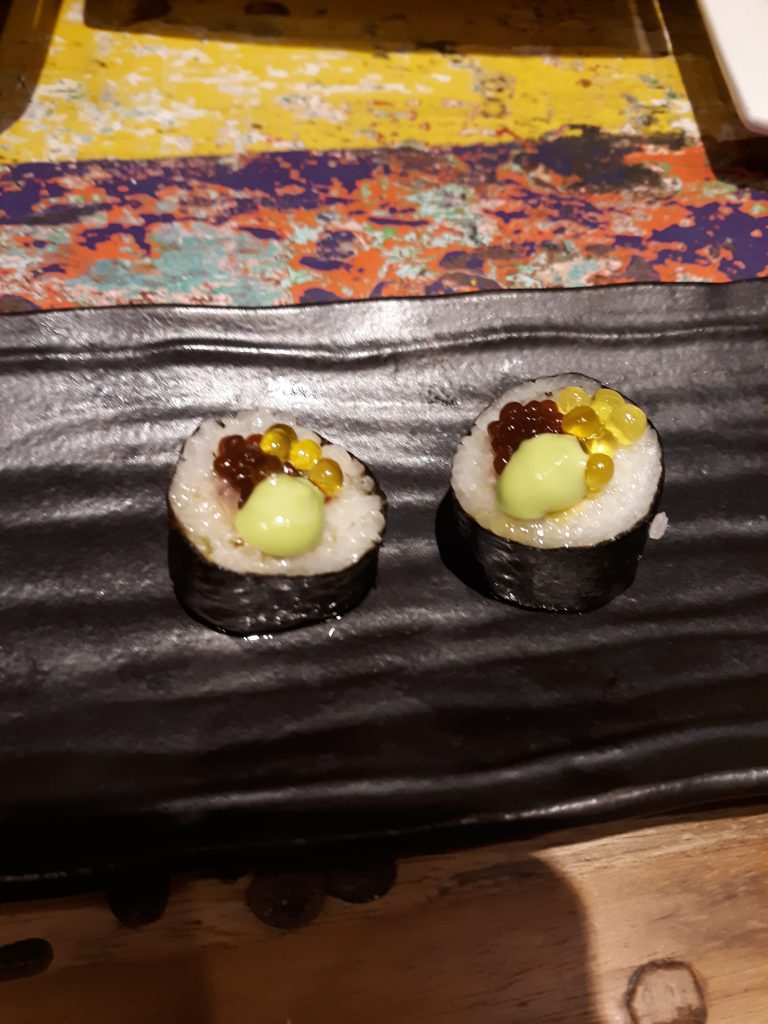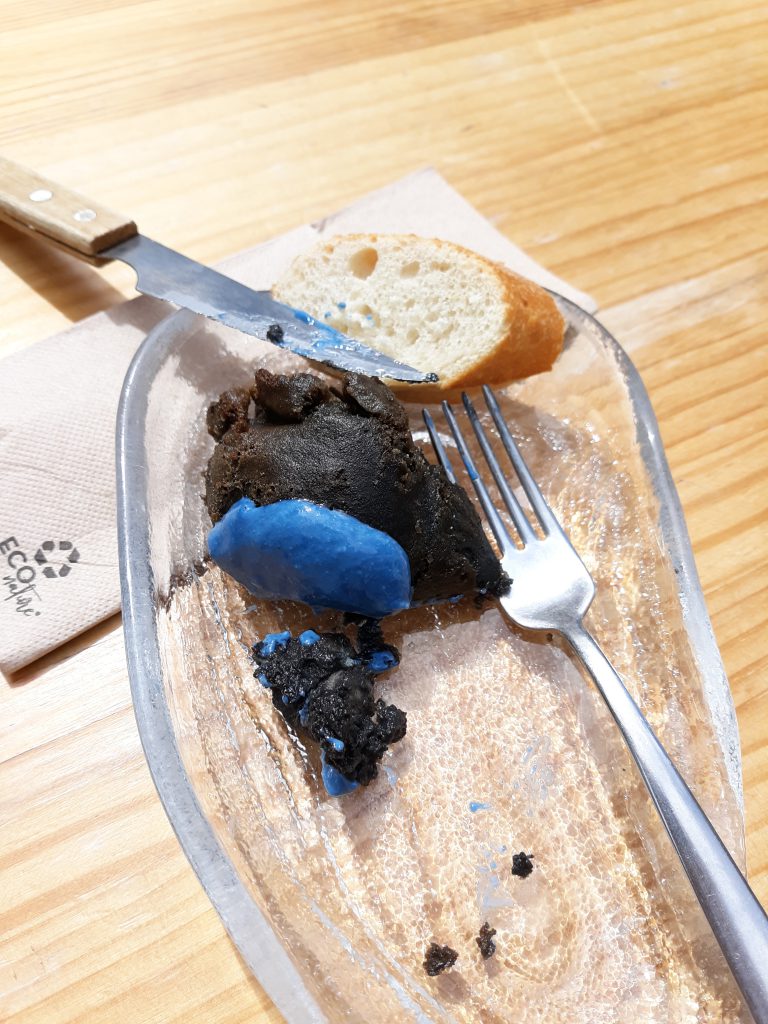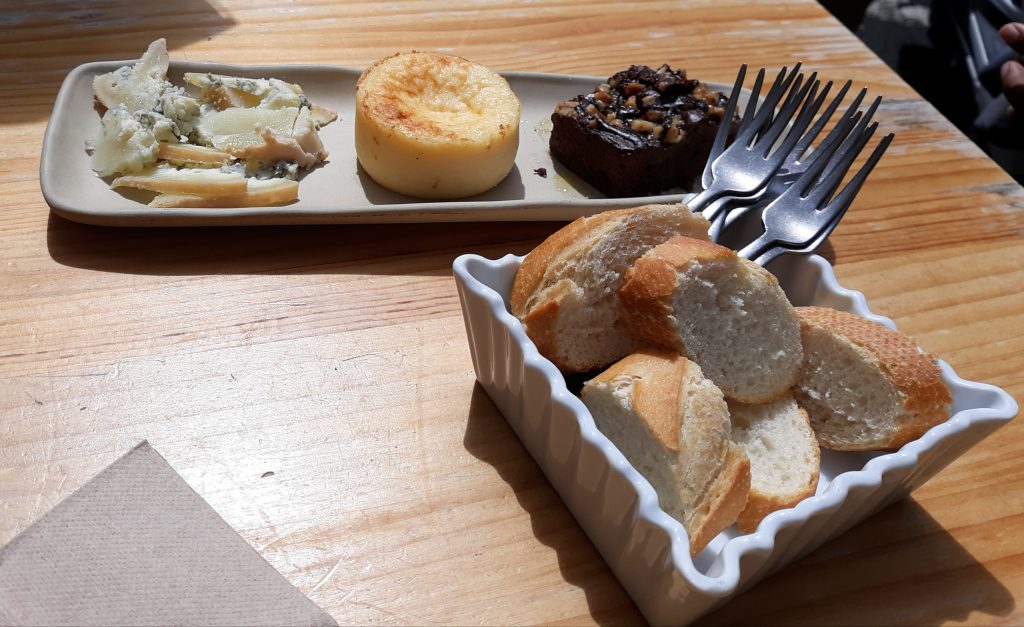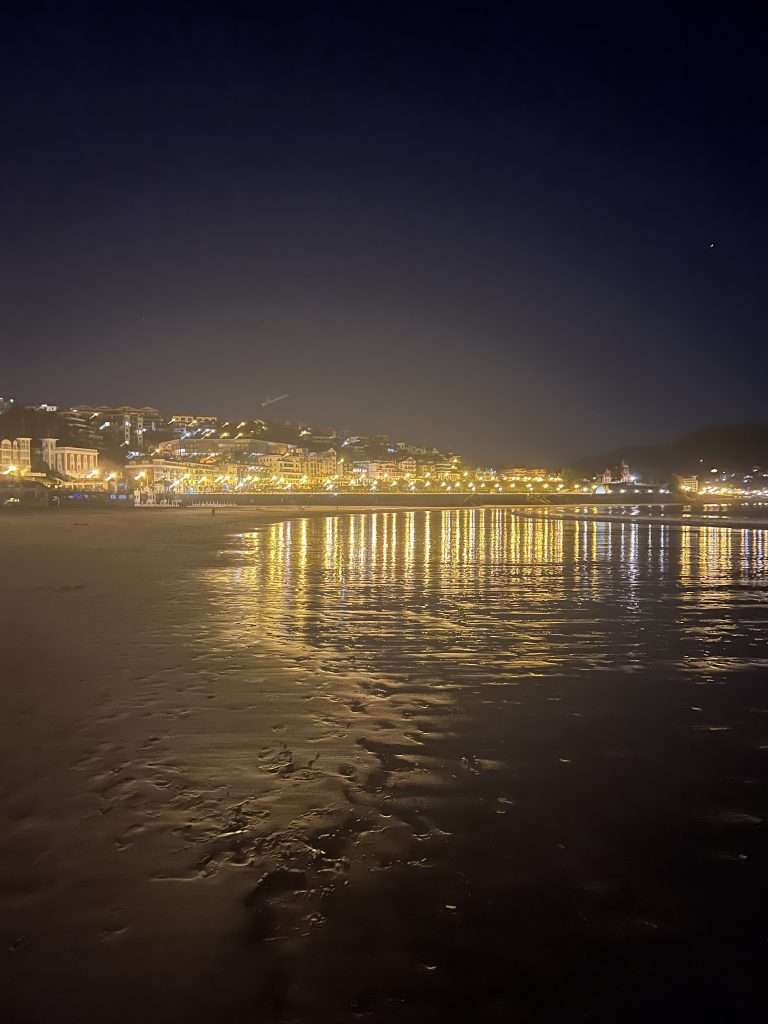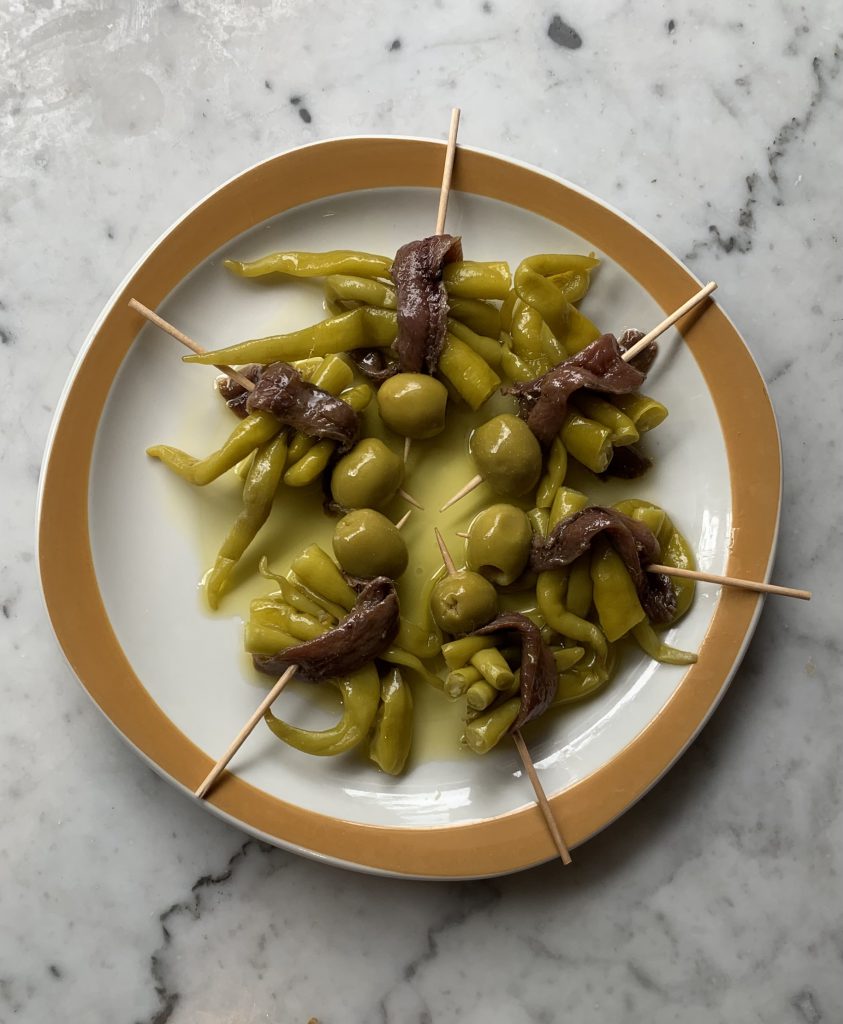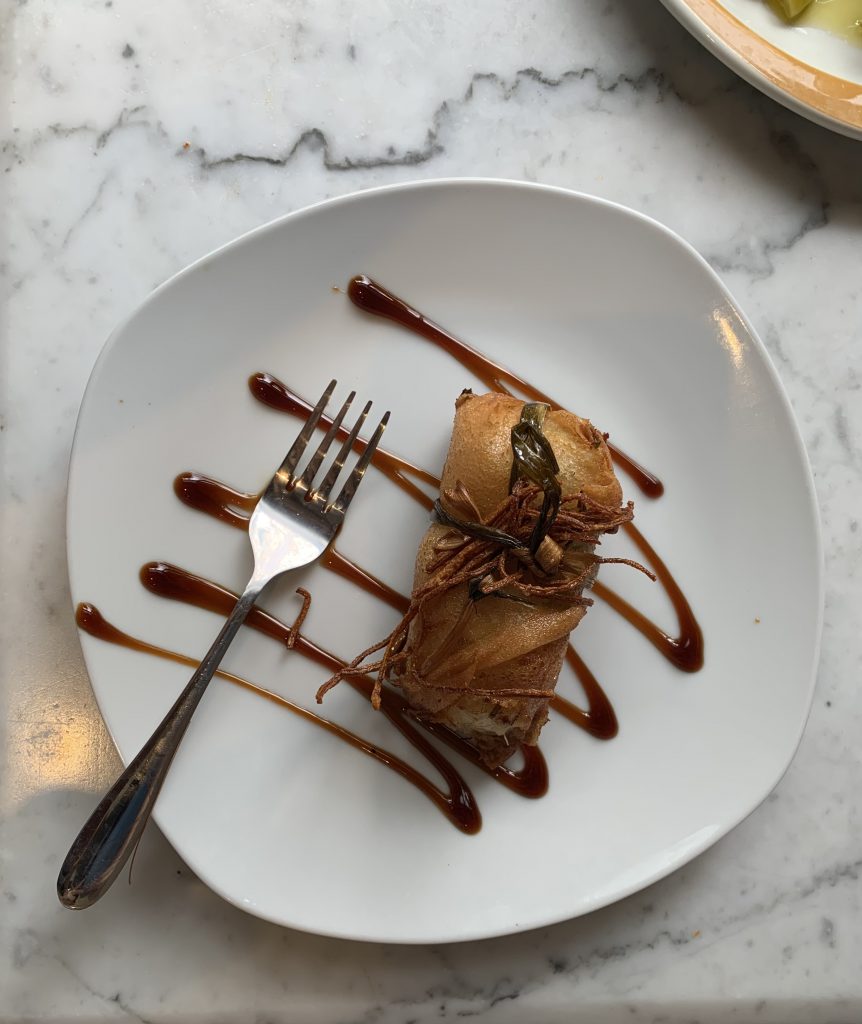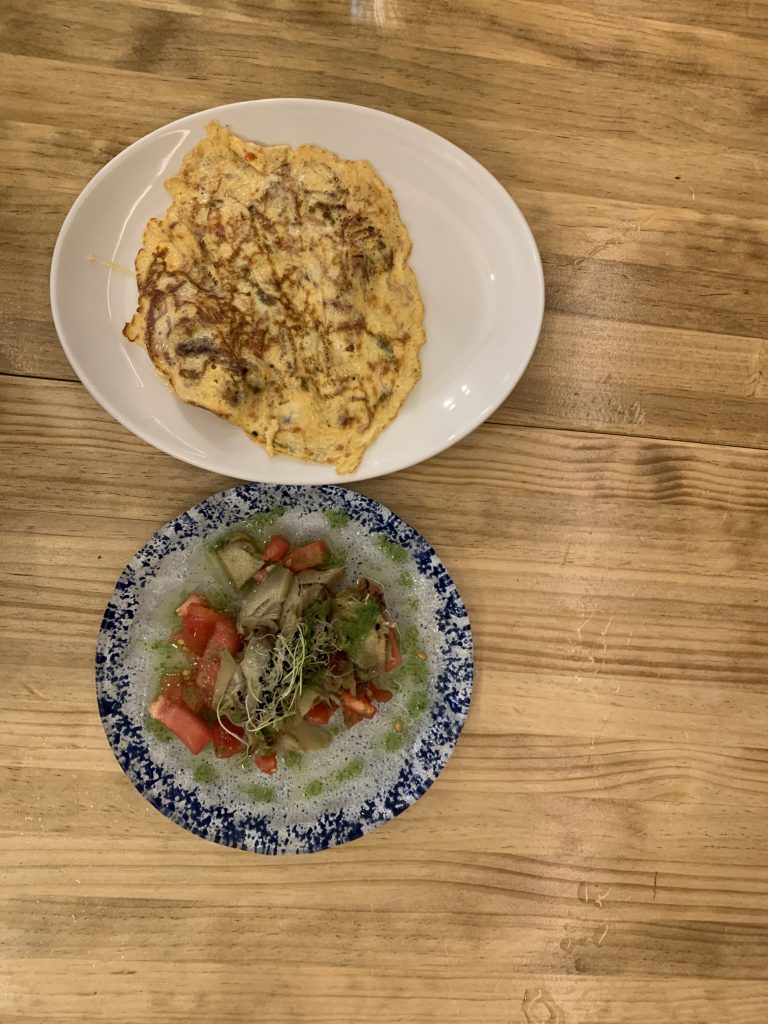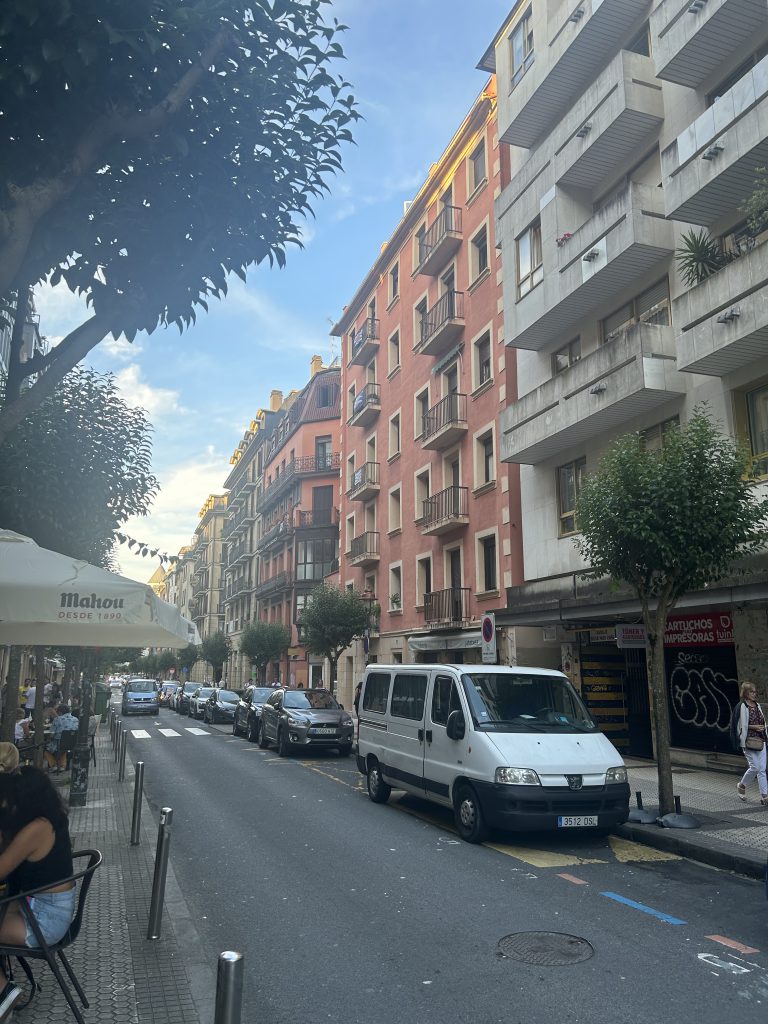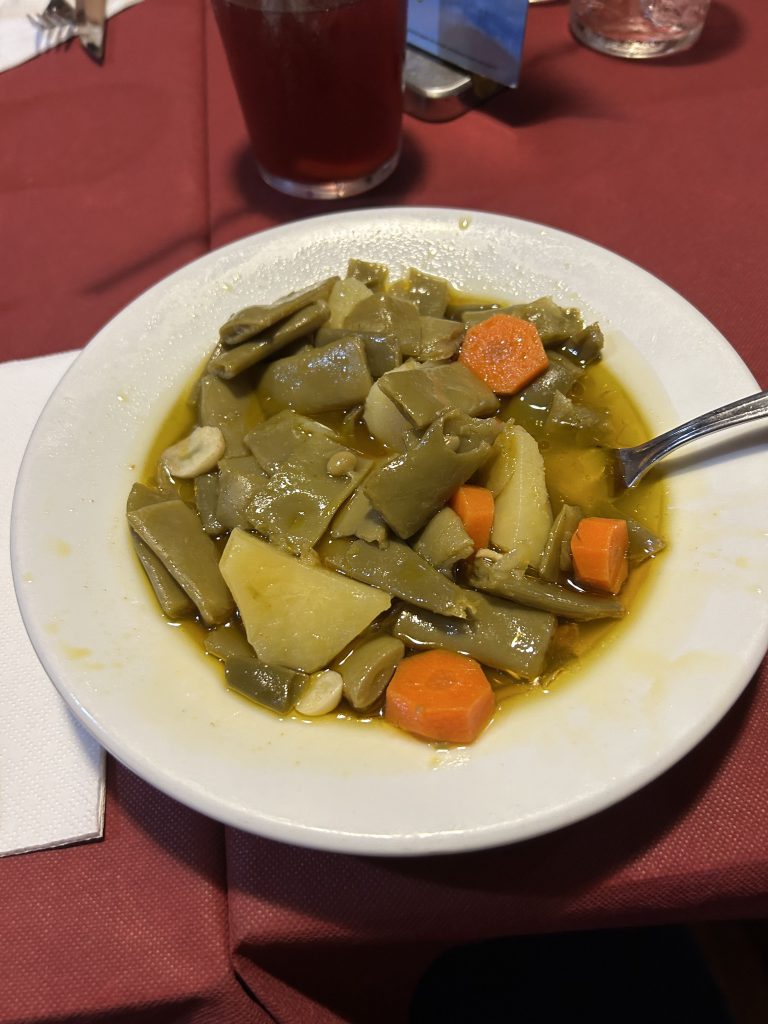An experience a little shy of 21 full days, will forever hold a special place in my memory of the 7,716 days I’ve been alive. I can honestly say San Sebastian, the Basque Country, and its culture touched me in so many ways I would run out of space trying to describe. Starting from my arrival at the Bilbao airport, the sight and smell of the beach , my first pinxto bite, and more, the Basque Country fully captivated every single one of my five senses.
SIGHT
On the day of our arrival a group of us found it imperative we see the beach and it did not disappoint. The sand was a light tan color, the water was as blue as the pictures with sailboats and ships visible in the far distance where Monte Urgull stood in the center creating the perfect panoramic postcard opportunity; and I was standing right in front of it.
I never really understood what people meant when they called something romantic until we stepped foot in Biarritz, France. The streets were lined with beautifully designed architecture, homes with a balcony at every level, corners decorated with Pastry shops and small town cafes, it was scenic. The beach was equally stunning as countless surfers tackled the waves, people sun bathed, others enjoyed the many food options and souvenir shops that surrounded the water; hotels in the shape of castles and we were standing right in the middle of it. Someone described the small city as “romantic, almost as if written by a woman;” which is a very 21st century expression but I think slightly covers the immense beauty and tranquility Biarritz had to offer.
Although many breathtaking sights fill the memory of my iPhone and mind, the last I would like to mention is the fireworks of Semana Grande. I haven’t attended many firework shows in my lifetime; so when my friends and I took our food to-go and ran toward the boardwalk to have a better view and that first firework exploded, I was massively pleased. There were thousands of people watching from the beach, others standing at the boardwalk, many of us finding a spot in “parte vieja” and in those 15 minutes a huge wave of happiness took over me and the city as we watched the sky sparkle from the spectacle.
SMELL
We were told the Basque Country was well known for their cuisine. They take pride in their history, their language and the unique culture they share with others through cuisine. Then bam, it hit me, and the rest of the group, the smell of walking anywhere near “parte vieja.” The smell of meat, seafood, freshly baked goods, roasted caramelized peanuts, and a combination of every possible dish they had to offer came together in harmony and formed an inviting smell; one that made you hungry and indecisive of where to eat. To be quite frank that feeling of not being able to choose did not go away out entire stay.
TASTE
I wouldn’t consider myself a picky picky eater but I think that’s what picky eaters say. I was both nervous and excited for pinxtos! We tried the very famous “Gilda,” and it was the perfect mix of pickled and salty that took me by surprised because I am a “no pickles please” girl. We proceeded to try salted shrimp covered in bread crumbs, simply seasoned scallops, pata negra (a very high end delicious ham) and more. Marti buckley shared that in her book she hoped to capture “the essence of basque cuisine. It’s been untouched and is defined by its simplicity: salt, olive oil, flavoring garlic and that’s it.” I can confirm after many meals her description was ideal.
Despite the many memorable plates, I must say my sweet tooth was beyond satisfied with the gelaterias and desserts San Sebastián had to offer. I tried a caramelized torrija with a vanilla raspberry sorbet and my mouth was in heaven. It was the absolute best dessert I’ve ever tried, it was moist yet had a hard caramelized top layer and the perfect hot and cold mixture because of the sorbet; a taste my description can do no justice to.
TOUCH
There are a few “firsts” during the trip that truly stuck with me such as the first time we stepped foot at the beach by our hotel, or the first time we rode our bikes to class, or the first time I ordered a sangria with my meal.
I learned so much from immersing in their culture and enjoyed riding bikes to places rather than sitting in a car. I loved feeling the wind as we crossed the bridge to Lacunza. I liked watching La Concha beach after going through the tunnel and observing the people walking. I also learned to appreciate the time we took walking places. One of my core memories will be walking down the boardwalk and laughing with my friends at how we choose to walk home during a rain storm.
In all of Spain, drinking is a social activity and I wasn’t so much fascinated by the amount of drinking that occurred but more the trust between adults and teenagers. I recently turned 21, but know I will be carded anywhere I go if ever ordered a drink. I was very impressed by the trust in alcohol consumerism. I will never forget the feeling of my first pinxto pote Thursday, and ordering a little burger pinxto with a Sangria.
HEARING
I’d like to end my blog with what my hearing picked up in San Sebastián. Many American radio hits played as we walked into several stores. In the morning the wind of the waves blurred distinct Spanish conversations I passed by. Between the hours of 4:00 and 7:30 the city seemed to quiet down as it was siesta. But as soon as the clock hit 8:30, conversation flooded cafes and restaurants as people stood around with pinxtos and wine or waited for a table to eat. Ordering food felt like an Olympic sport and I was beyond grateful to speak Spanish because exchanges were very quick since every single restaurant was full of people. In parte vieja there were also many bars playing music and during semana grande concerts and street shows dominated the noise level.
San Sebastián felt so alive, it sounded incredibly alive between the crowds of people, music, fireworks, carnaval and more!
Yet what will always replay in my brain was the first time a store owner of a small gelateria greeted me saying “Kaixo!” All I could think was “OMG HE JUST SAID HI TO ME IN BASQUE,” and for the first time in two weeks I felt like I was doing something right; like I finally managed to fully immerse.
There are countless aspects of the Basque Country I learned about and experienced that I could share, but I would like to end it here. I can confidently say no other trip has taught me and affected me as much as this one and with that:
Thank you and bye!
Gracias y adiós!
Eskerrrik asko agur!
